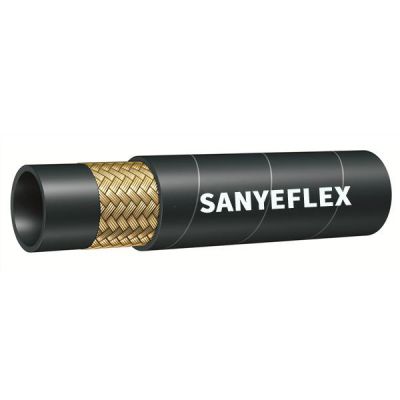Nov. 28, 2023
Hydraulic hoses are a vital component in various industries that rely on machinery and equipment to perform critical tasks. These hoses ensure the transmission of pressurized fluids, allowing complex systems to function smoothly and efficiently. However, their importance often goes unnoticed until a hose failure occurs, leading to downtime and costly repairs. In this blog, we will explore some essential tips to help protect hydraulic hoses and extend their lifespan, ultimately reducing maintenance expenses and improving overall productivity.

Proper Handling and Storage:
One of the best ways to protect hydraulic hoses is to ensure proper handling and storage. Here are a few guidelines to follow:
a. Avoid sharp bends and kinks: Excessive bending or twisting can cause damage, leading to cracks or leaks. Use hose support devices for routing and keep hoses away from sharp edges or abrasive surfaces.
b. Prevent crushing: Do not stack heavy objects on top of hoses or subject them to heavy pressure, as this can cause internal damage and weaken the hose's integrity.
c. Keep away from heat sources: Position hoses away from direct heat sources such as engines or exhaust systems to prevent premature aging or deterioration.
d. Store hoses correctly: When not in use, store hoses in a clean and dry environment, away from direct sunlight, chemicals, or extreme temperatures.
Regular Inspections:
Regular visual inspections of hydraulic hoses are essential to identify potential issues before they become major problems. Look out for the following:
a. External signs of wear or damage: Inspect the outer surface of the hose for abrasions, cuts, bulges, or signs of leakage. These are indications that the hose may need immediate attention or replacement.
b. Check fittings and connections: Ensure fittings are securely attached and not leaking. Loose fittings can lead to hydraulic fluid leakage, compromising both safety and efficiency.
c. Monitor hose flexibility: A stiff or rigid hose is a warning sign that it may have reached the end of its lifespan. Replace hoses that have lost their flexibility as they are more prone to failure.
Proper Installation:
Proper installation is crucial to ensure the longevity of hydraulic hoses. Consider the following tips:
a. Follow manufacturer guidelines: Always refer to the manufacturer's recommendations for proper hose installation, including tightening torque specifications for fittings.
b. Use the correct installation tools: Use appropriate tools to assemble and crimp hoses. Incorrect crimping or assembly can lead to leaks or hose separation.
c. Avoid over-tightening: Over-tightening fittings can lead to damage or distortion of the hose's outer covering and weaken its structural integrity. Follow the specified torque values to ensure proper sealing.
Regular Maintenance:
Regular maintenance plays a crucial role in protecting and extending the life of hydraulic hoses. Consider implementing the following practices:
a. Maintain cleanliness: Keep hoses free from dirt, debris, or contamination. Regularly clean them with mild detergents and ensure the area around the fittings is free of debris before connecting.
b. Flush hydraulic system: Periodically flush the hydraulic system to remove any debris or contaminants that may cause abrasion or blockages within the hose.
c. Conduct pressure tests: Regularly test the hydraulic system for pressure leaks to identify any potential issues early on.
Conclusion:
It is essential to protect hydraulic hoses from wear, damage, and premature failure. By following proper handling and storage practices, conducting regular inspections, ensuring correct installation, and performing routine maintenance, you can safeguard your hydraulic hoses and extend their lifespan. Ultimately, investing time and effort into such preventive measures will not only save you money on repairs and downtime, but also promote overall efficiency and safety in your machinery and equipment operations.
Our Customer
Tel.: +86 400 0318 111
Email: admin@sanyeflex.com
Add.: #218 Zhongke Street, High-tech Zone, Hengshui City, Hebei Province, China



